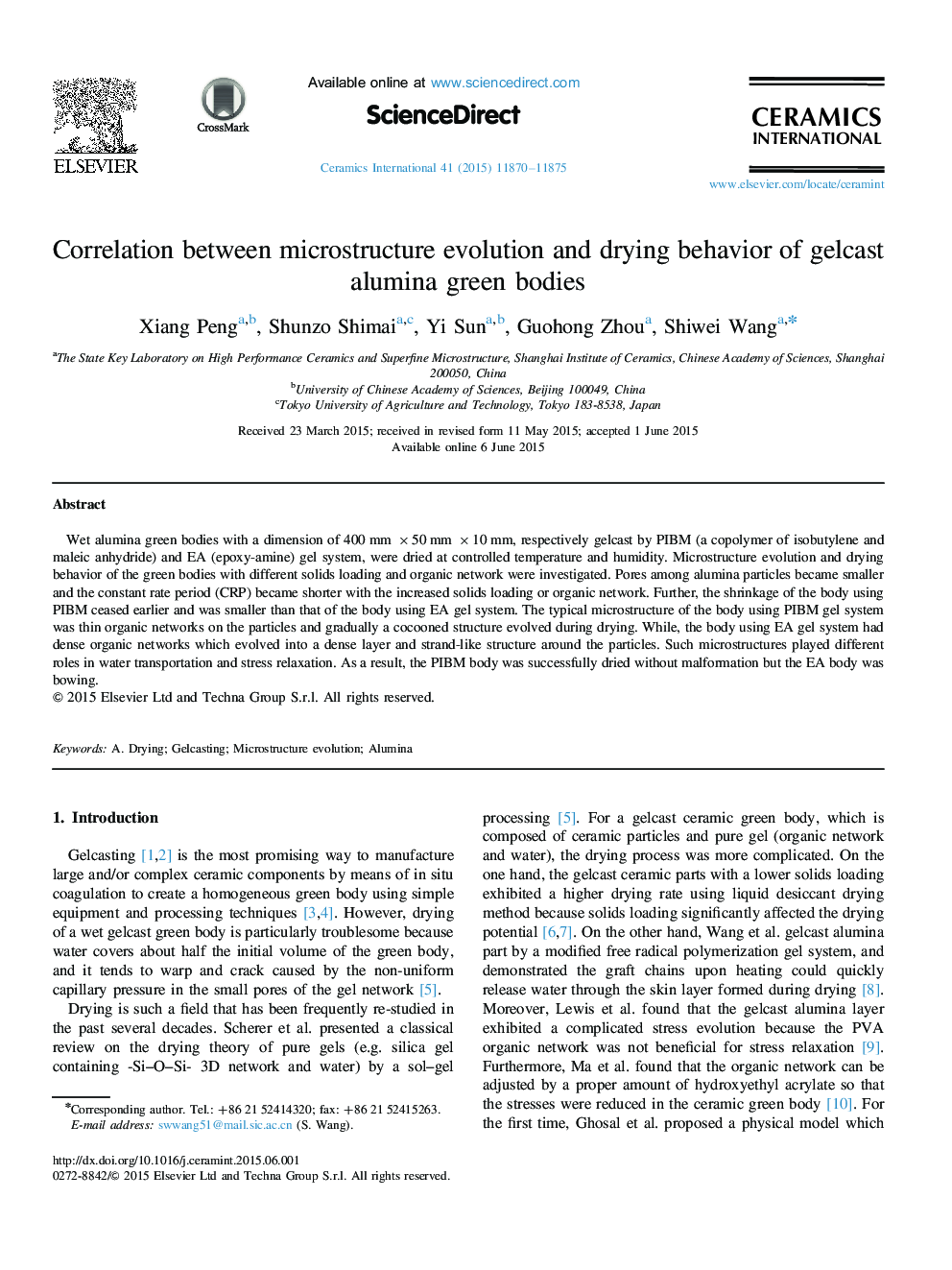| Article ID | Journal | Published Year | Pages | File Type |
|---|---|---|---|---|
| 1459922 | Ceramics International | 2015 | 6 Pages |
Wet alumina green bodies with a dimension of 400 mm ×50 mm ×10 mm, respectively gelcast by PIBM (a copolymer of isobutylene and maleic anhydride) and EA (epoxy-amine) gel system, were dried at controlled temperature and humidity. Microstructure evolution and drying behavior of the green bodies with different solids loading and organic network were investigated. Pores among alumina particles became smaller and the constant rate period (CRP) became shorter with the increased solids loading or organic network. Further, the shrinkage of the body using PIBM ceased earlier and was smaller than that of the body using EA gel system. The typical microstructure of the body using PIBM gel system was thin organic networks on the particles and gradually a cocooned structure evolved during drying. While, the body using EA gel system had dense organic networks which evolved into a dense layer and strand-like structure around the particles. Such microstructures played different roles in water transportation and stress relaxation. As a result, the PIBM body was successfully dried without malformation but the EA body was bowing.
